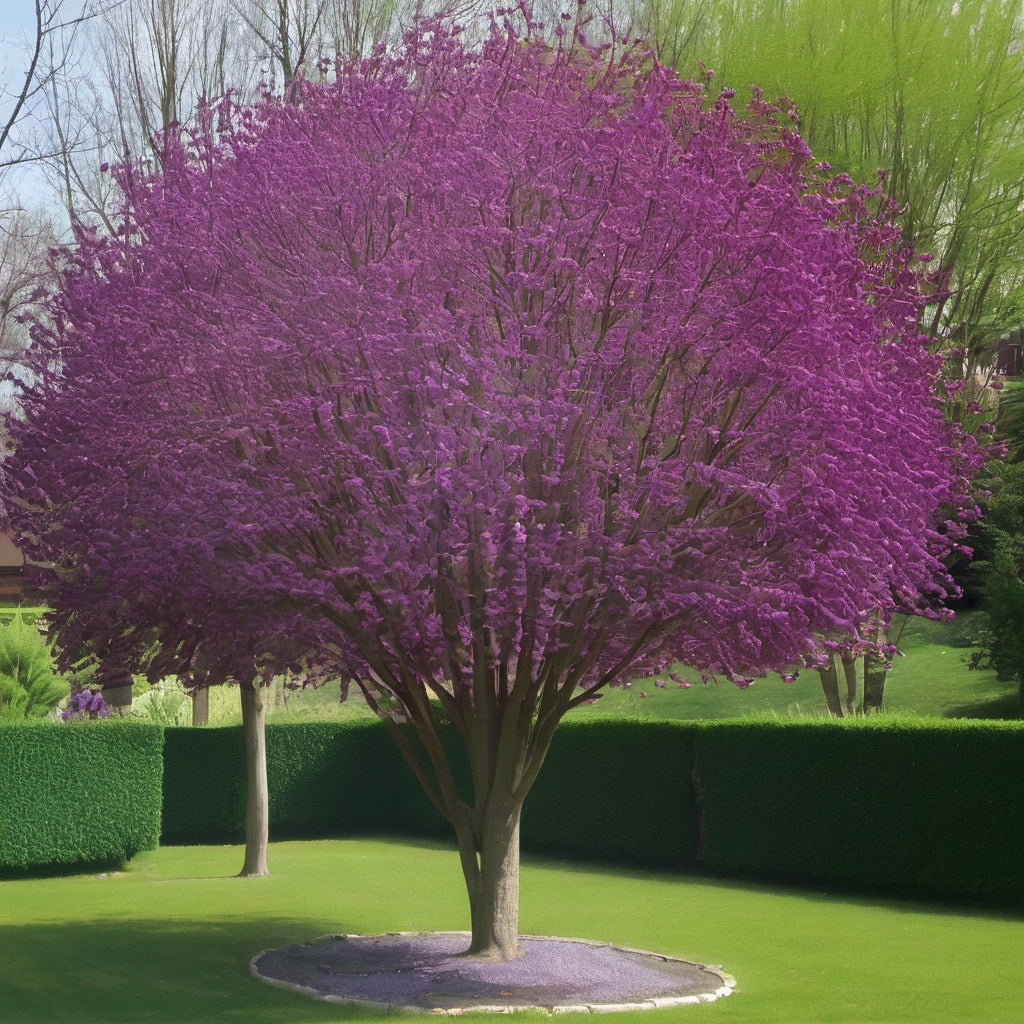Judas Tree Seeds
Judas Tree Seeds
Couldn't load pickup availability
Judas Tree Seeds
(Cercis siliquastrum)
Cercis siliquastrum, commonly known as the Judas tree, is a deciduous tree from the family Fabaceae. It is native to the Mediterranean region and parts of western Asia, and is often planted as an ornamental tree due to its striking appearance, particularly in spring.
Key Characteristics:
Height & Spread: It typically grows to about 10-12 meters (30-40 feet) in height and can spread out to a similar width.
Flowers: One of its most striking features is its profusion of small, vibrant pink to purplish pea-shaped flowers that bloom directly on the branches and trunk (cauliflory). The flowers appear in early spring, even before the leaves develop.
Leaves: The heart-shaped leaves emerge shortly after flowering and are bluish-green, often turning to a more vibrant green in summer. In autumn, the leaves can take on yellowish hues before falling.
Fruit: The tree produces flattened, pod-like fruits, typically 5-10 cm long, which contain seeds. These pods can persist on the tree into the winter.
Growing Conditions: It prefers well-drained soil and thrives in full sun but can tolerate some shade. It is drought-tolerant once established, making it a good choice for Mediterranean or dry climates.
Symbolism & Name: The common name “Judas tree” is linked to a legend that Judas Iscariot, the apostle who betrayed Jesus, hanged himself from this tree, which is why the tree supposedly blushed with pink flowers out of shame.
Uses:
- Ornamental: Due to its vibrant spring flowers and appealing shape, it is widely planted in parks and gardens.
- Ecological: The flowers attract pollinators, especially bees, and the tree can provide shade and shelter for wildlife.
- Medicinal: In some cultures, various parts of the tree have been used in traditional medicine, although these uses are less common today.
Zones: 6 to 8
Germination Range: 60-80%
Stratification Requirement: Scarify seed and then cold stratify 30 days.
Planting Instructions:
To plant Cercis siliquastrum (commonly known as the Judas tree) seeds, you need to follow a specific process due to their hard seed coat, which requires pretreatment. The best time to plant is in autumn or early spring, but preparing the seeds properly is essential for successful germination.
Preparation
The seeds have a tough outer coat, so scarification is necessary to encourage germination. To scarify, you can lightly sand the seed surface with fine-grit sandpaper or nick the seed coat with a sharp knife. This will allow moisture to penetrate the seed. After scarification, soak the seeds in warm water for 24-48 hours to soften the seed coat further.
Stratification
Judas tree seeds benefit from cold moist stratification to simulate the winter period. After soaking, place the seeds in a plastic bag with a moist seed starting mix, Keep the bag in the refrigerator for about 4 weeks. This process mimics natural winter conditions and improves the chances of successful germination.
Sowing the Seeds
Once the stratification period is complete, sow the seeds in well-draining, fertile soil. You can use seed trays or small pots with a mix of peat and sand. Plant the seeds about 1 cm deep, ensuring they are covered lightly with soil. Water the soil gently but thoroughly. Position the trays or pots in a bright spot with indirect sunlight. The ideal temperature for germination is around 65-75°F.
Care and Germination
Keep the soil consistently moist but not waterlogged. Germination can take 1-2 weeks, so be patient. Once seedlings emerge, continue to provide indirect sunlight and keep the soil moist. When the seedlings are strong enough, usually after the first set of true leaves has developed, they can be transplanted into larger pots or directly into the garden in a sunny, sheltered location with well-draining soil.
With proper care, these seeds will grow into healthy young Judas trees, which will eventually develop their characteristic heart-shaped leaves and stunning pink flowers.
Share


